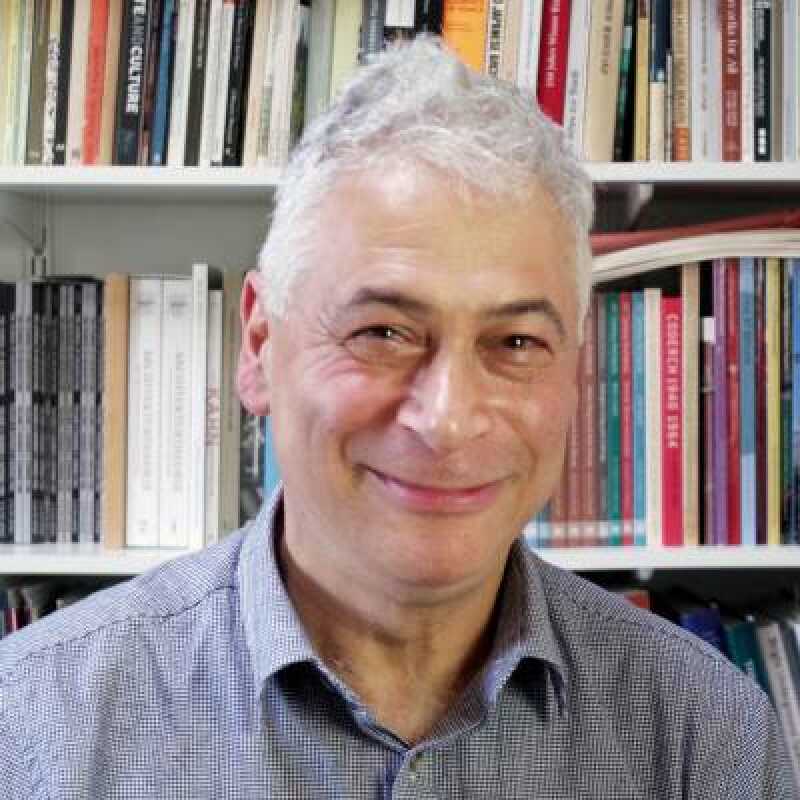- University of Kent
- Architecture and Design at Kent
- People
- Professor Gerald Adler
Professor Gerald Adler


Qualifications: PhD, BA, Dip. Arch, RIBA
Gerald Adler is Head of the Kent School of Architecture & Planning (KSAP), having been Deputy Head for many years, in addition to having directed the Part One programme. He is a graduate of the University of Sheffield. His practice experience has been with Kammerer and Belz in Stuttgart, Georg Heinrichs in Berlin, Burkard Meyer Steiger in Baden, Switzerland, Hampshire County Architects in Winchester, Koichi Nagashima in Tokyo, and Ted Cullinan in London. He has served for many years as an Examiner for the Architects’ Registration Board, for the Royal Institute of British Architects for its prize committees for research and dissertations, and continues to be a Reader for the Queen’s Anniversary prizes for Further and Higher Education.
His monograph on the British architectural practice Robert Maguire & Keith Murray (RIBA Publishing, 2012) reawakened interest in an architectural approach dubbed ‘Romantic Pragmatism’, while re-engaging with the significance the practice had for liturgical reform in mid-twentieth-century church design. He has recently written on Dresden (‘The German Reform Theatre: Heinrich Tessenow and eurhythmic performance space at Dresden-Hellerau’, Ashgate, 2015) and Dessau (‘Energising the Building Edge: Siegfried Ebeling, Bauhaus bioconstructivist’, Routledge, 2014), while a paper on the German philosophical anthropologist Helmuth Plessner (in Architecture Philosophy) was published in 2019.
He has co-edited the 2012 AHRA (Architectural Humanities Research Association) book Scale (Routledge, 2012), and most recently a book on the relationship between rivers and architecture (Riverine, Routledge, 2019). A chapter on the changing centrality of the bimah in synagogue design is forthcoming: ‘Reading, storing and parading the book: between tradition and modernity in the synagogue’, in Max Sternberg and Ross Anderson (eds), Modern Architecture and the Sacred, Bloomsbury, 2020), and he has just been commissioned by Bloomsbury to write a monograph on Heinrich Tessenow, the German ‘Reform’ architect on whom he wrote his PhD, in its series ‘Studies in Modern Architecture’ (Janina Gosseye and Tom Avermaete, eds.). His engagement with the Heinrich Tessenow Society as an active member of its Gold Medal Committee keeps him in touch with developments in Continental Europe, where most recently he has published on Berlin housing in ‘Zwischen radikaler Hoffnung und pragmatischer Realisierung. Myra Warhaftigs feministische Architekturtheorie und -praxis im Westberlin der 1980er-Jahre’, in Katia Frey and Eliana Perotti (eds), Frauen blicken auf die Stadt: Theoretikerinnen des Städtebaus, Bd 2 (The City of Women. Urban Concepts, Projects and Realizations, vol. 2), Reimer: Berlin, 2019.
Research interests:
| Module Code | Module Title | Information |
|---|---|---|
| AR322 | House and Housing | Module Convenor and Tutor |
| AR597 | Dissertation | Tutor |
| AR552 | Architecture and Landscape | Tutor |
| AR554 | Urban Intervention | Tutor |
| AR831 | Urban Landscape | Module Convenor and Tutor |
| AR832 | Research Methods and Analysis | Tutor |
| AR847 | Urban Design Project: | Module Convenor and Tutor |
| AR848 | Theory and History of Urban Design | Module Convenor and Tutor |
| AR999 | Dissertation: Urban Design | Tutor |
PhD Supervision
As a late career researcher, I completed my PhD on Tessenow in 2004, after prolonged periods in practice and teaching. My first post-doctoral publication is forthcoming, the chapter 'Curating the Social, Curating the Architectural' in Chaplin, Sarah and Stara, Alexander (eds). (2009) Curating Architecture and the City. Abingdon. Routledge and arose from my paper delivered at the AHRA International Conference at Kingston University, December 2007.
Scale: Imagination, Perception and Practice in Architecture by Gerald Adler, Timothy Brittain-Catlin and Gordana Fontana-Giusti eds (2012) Abingdon: Routledge, ISBN: 978-0-415-68711-9
The latest AHRA (Architectural Humanities Research Association) book in its Critiques series has just been published. It contains a chapter written by KSA Deputy Head Gerry Adler on the subject of bioconstructivism in architecture. In 1926 the sometimes Bauhaus student Siegfried Ebeling had his book Der Raum als Membran (Space as Membrane) published in Dessau; here he began to rethink the periphery of a building, primarily in terms of energy flows. This manifesto, couched in the Expressionist fervour of its time, is at odds with the positivist direction in which Walter Gropius was leading the Bauhaus. Ebeling, who managed to straddle the materialist/idealist dichotomy of the Bauhaus from his workshop in the adjacent Junkers aircraft factory, is an intriguing example of an architect who summons up the contradictions and possibilities inherent in early bioconstructivist thinking.
Gerald Adler, ‘Energising the Building Edge: Siegfried Ebeling, Bauhaus bioconstructivist’, in Ruth Morrow and Mohamed Abdelmonem (eds), Peripheries (AHRA Critiques series,vol 8), Abingdon: Routledge, 2012. ISBN: 978-0-415-64029-9 (hbk); ISBN: 978-0-415-64030-5 (pbk).
Forthcoming book chapters:
The ARQ (Architectural Research Quarterly) has commissioned a paper 'Towards An Architecture Of De-Materialisation: Heinrich Tessenow's Festspielhaus, Hellerau (1910-1912)'. This is currently being edited by the journal.
Loading publications...
Showing of total publications in the Kent Academic Repository. View all publications